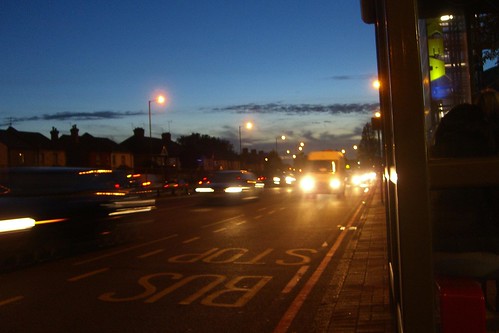I haven’t posted on here in a long time, so what better way to get back into my blog than with a brief recap of three books I’ve read this month.
Leadville by Edward Platt – This book was suggested to be back when I was living in San Francisco when I told someone in London where I was going to be living. Little did I know how fitting this would be.
Leadville is subtitled “A biography of the A40” and tells the story of Western Avenue in London. Edward Platt, the author, looks into the lives of the people living beside this extremely busy commuter road. As he begins to interview the residents, he quickly realizes that he has stumbled into the tail end of a decades-long project to move the residents out of their houses to accomodate the widening of the road. While to an outsider it may look like a vision of hell, living practically on top of a motorway, as he talked with many of the long-time residents he realized that many of them were not in a hurry to leave. He also encounters squatters and a variety of other more transient residents, including temporarily-housed council tenants who don’t know where they will go when they are finally forced to leave. Platt also delves into the history of development in West London and looks at how it differed from the development of similar communities in the United States. All in all, an excellent book to read if you want to learn about the development of suburban London in the 20th Century and the politics of roads. My own existence in London is centered very close to a number of roads that closely resemble the A40, as does the residential architecture of my neighbourhood.

Concrete Island by JG Ballard – I had never read Ballard before picking up this book at the local library. I realized that if I was going to be an architect and live in the UK, I needed to read Ballard as he has been a huge influence in understanding the urban built environment. Ballard has never been as popular in the US as he is in his native country, though I’m still surprised at myself that I hadn’t picked it up.
Concrete Island tells the story of a wealthy 35 year-old architect (okay, you can already tell it’s a work of fiction) who goes off the road on his commute home from Central London and finds himself trapped on a traffic island.
Influenced by the recent development of urban motorways (the book dates to the early 1970s) and Ballard’s childhood love of Robinson Crusoe, the book reads as plausible, despite the unlikeliness of it actually occuring, due to the visceral style in which it is written. This was the perfect follow-up to Leadville because it gets at many of the same points dealing with the alienation caused by the modern vehicular landscape created in the second half of the 20th Century. The psychological implications of being trapped in this landscape are explored in a fascinating and sometimes disturbling manner.
The Architecture of Happiness by Alain de Botton – I should start this off by saying that this is the type of book I never would have read, had they not happened to have it at the library down the street. It was actually one of the only books in the “Architecture” section that wasn’t about remodeling your kitchen. While I’ve seen this author’s name all over the place for the past few years, I hadn’t actually read anything of his save for a magazine article.
This book was a definite counterpoint to the other two. Platt and Ballard spend their entire books essentially describing the design of dystopia, while Alain de Botton seeks to find the secrets to what makes people happy in architecture.
The main problem with the book is its very premise – it’s not really a building’s job to make us happy. In fact, after studying architecture as an art student in undergraduate art history classes, attending graduate school to study architecture, and spending several years practicing architecture, I don’t think I’ve ever heard the word “happiness” used in the context of architecture, except for this book.
De Botton likes the English city of Bath, some modern houses (if they have a touch of the traditional), and staying at historic Japanese inns. He dislikes Corbusier’s urban planning, fake Tudor houses with plastic beams, and poorly-proportioned residential skyscrapers. He never posits much of a theory as to what the “architecture of happiness” actually is. He also fails to recognize that for a variety of reasons, not all of the world should be designed to be happy.
While de Botton wishes London could have been as beautiful as Paris, he never mentions the immense upheaval caused by Hausmann as he forced his boulevards through the city (nor the alternative motives behind their creation). As nice as modern-day Paris may be (and as happy as it may make the author) happiness had very little to do with the redesign of the city in the 19th Century.This is same fault that I found throughout the book – it doesn’t dig very deep and relies on a fairly simple understanding of architecture and architectural history.
The book fails on many levels, but it may be a good introduction to architecture for someone browsing the library for a book on remodeling his or her kitchen.
I am reading Arch of Happiness right. now. and like your review of it. I’m only on about page 25, and am already drifting off into other books and magazines, but now that I’ve read your review, I’m newly inspired to finish the book (even if possibly to come to the same conclusion).